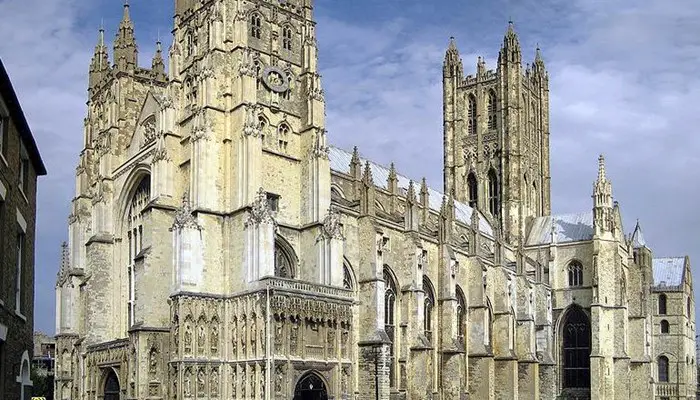Perfect experiences for any occasion
redletterdays.comIrresistable gifts, including short breaks, thrills, attractions, adventure and gifts.

redletterdays.comIrresistable gifts, including short breaks, thrills, attractions, adventure and gifts.

www.booking.comSave up to 40% off UK hotel rooms. The perfect weekend getaway.

my.britevents.com/adsThis ad costs just £0.001 per page. Can you afford NOT to buy this advert?
With its rolling green hills, historic castles and proximity to London, the county of Kent, known as the 'Garden of England', is one of the country's favourite travel destinations. BritEvents looks at its most interesting landmark � Canterbury Cathedral, the site of Thomas Becket's murder in 1170.

Canterbury Cathedral is one of Kent's premier attractions, and a visit to the county simply wouldn't be complete without seeing it. But its value as a travel destination isn't restricted to its appearance this cathedral has a remarkable history, too. Its origins can be traced back to 1070 when the first Norman archbishop, Lanfranc, had a new cathedral built on the remains of an earlier structure.
The cathedral is essentially a study in medieval architecture, as its original structure has been extensively changed and added to over the centuries. But the real reason many tourists visit is because of the infamous incident involving Thomas Becket in 1170.
Becket had, in 1162, become Archbishop of Canterbury thanks to his friendship with King Henry II. The monarch hoped Becket would use this powerful position to further royalist aims, but the new archbishop had his own ideas, which naturally infuriated Henry II.
The rift between the old friends became so serious that, in 1165, Becket fled to Europe, probably fearing for his life. But the two men reconciled, and Becket returned to England in 1170. It wasn't long before he again irked the king by excommunicating priests who had done the monarch's bidding during Beckett's exile.
History records that in an almighty tantrum, Henry II wished for Becket's death in the presence of four knights, who took him at his word and murdered the archbishop in front of the cathedral altar on 29 December 1170. Becket, it was said, was beheaded with such force that it broke the blade of the axe. He was canonised three years later and became a religious martyr.
Four years after Becket's death, a fire ravaged the cathedral, resulting in a small structure, known as Trinity Chapel, being built to house his remains. Henry II evidently regretted his hasty words because he did public penance at the spot Becket was murdered; this later became an important place of pilgrimage for Christians from all over the world. The cathedral also played a part in the events of the following centuries.
In the 14th century, Geoffrey Chaucer wrote Canterbury Tales, the legendary story of several pilgrims travelling to Canterbury. Chaucer, the son of a wine merchant, was considered to be England's first great poet, and Canterbury Tales was one of the first English books to be printed.
In 1538, Becket's tomb was destroyed as part of Henry VIII's Reformation. The Tudor king had the archbishop's remains burned as a warning to any bishop who might entertain contradicting his monarch. Later, in the Civil War of the 17th century, the cathedral was the focus of a significant battle when Oliver Cromwell's army defeated the Royalists of Charles I.
The cathedral has many surviving architectural features that are worth investigating. The nave, for instance, is 100 metres in length, making the cathedral Europe's longest medieval church. Then there's the South West Porch, which was built to honour the English victory against the French at Agincourt in 1415.
A medieval stained glass window depicts the 1000-year-old Methuselah while the cathedral's central spire, built between 1496 and1505, and known as the Bell Harry Tower, contains a bell donated on behalf of St Thomas by Prior Henry of Eastry in 1316. Another highlight is the Black Prince's Tomb of Edward III's son.
The spot where Becket's tomb was located before Henry VIII's act of senseless religious vandalism is today marked by a single candle.